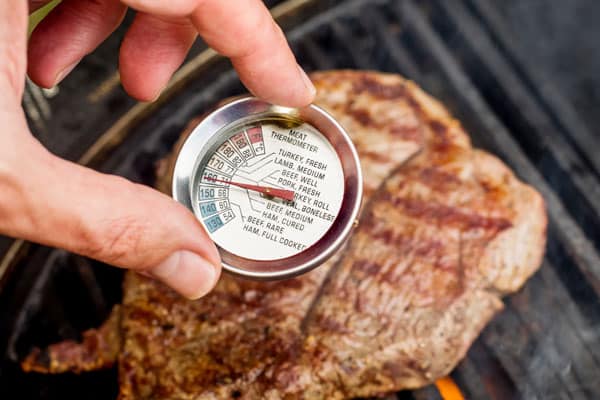The Food Thermometer: An Essential Tool for Every Home Kitchen

Using a food thermometer is not just a good practice; it's crucial for preventing foodborne illnesses.
Serving safe and delicious food.
Achieving the perfect balance between food safety and exceptional taste can be challenging. Alas, one simple tool can make a world of difference in your kitchen: a food thermometer.
We’ll discuss why a food thermometer is more than just a kitchen gadget and why every home cook should have one. We'll also debunk some myths about visual cues and help you understand how to use a thermometer to create safe and delicious meals.
Why use a food thermometer?
A food thermometer is your best friend when it comes to ensuring the safety and perfection of your favorite dishes. Most importantly, it's a must-have to prevent foodborne illnesses and ensure your dishes are cooked to perfection.
How can we balance safety and doneness?
“Cooking to perfection” often involves a vague standard of “doneness.”
The term "doneness" in cooking refers to the sensory aspects of food, such as the texture, color, appearance, and juiciness of a dish. “Doneness” is a matter of personal preference that varies between individuals.
Food safety depends on maintaining food handling and preparation standards to reduce the risk of illness caused by microorganisms. Proper cooking and food temperatures are an important part of food safety.
A food thermometer can help you cook your favorite dishes to your personal preference and simultaneously ensure the safety of the food you prepare.
Why are minimum internal temperatures essential?
All food products contain various microorganisms. Food poisoning is caused by eating foods that are contaminated with illness-causing microorganisms.
It is easy to assume if something looks done, it ought to be safe. However, the appearance of food can often be misleading.
Contaminated food will usually look, smell, and taste normal. Food poisoning bacteria can grow and multiply on some types of food more easily than others.
Additionally, certain foods have a higher risk of causing food poisoning, and some people are more susceptible to food poisoning than others.
Fortunately, many of the illness-causing micro-organisms can be destroyed or controlled by keeping food at safe temperatures.
Food thermometers are the only accurate method to determine if food has reached a hot or cold temperature where these organisms have been destroyed or can no longer grow.
What are the different types of food thermometers?
Food thermometers come in a variety of forms, including digital, dial, and other types.
When selecting a food thermometer, make sure the thermometer is:
- Appropriate for your chosen purpose
- Able to accurately measure the temperatures you will need to track
- Safe and approved for the environment and food product that you will be monitoring.
The descriptions and advantages of various food thermometers are available here.
Calibrating a Thermometer
While many thermometers can be calibrated with an adjustment nut, others cannot be adjusted. In this case, it's crucial to test their accuracy periodically and, if necessary, replace them.
Checking the accuracy of your food thermometer is easy. You can use the ice water or boiling water methods. Detailed instructions on using these methods to calibrate your food thermometer are available here.
How do you use a food thermometer?
To make the most of your food thermometer, it's crucial to place it in the right location within the food. Most thermometers are accurate within 2-4°F. However, correctly determining the temperature of your food depends on properly locating the thermometer in the center of your food product.
Raw beef, pork, lamb, and veal steaks, chops, and roasts should be cooked to a minimum internal temperature of 145°F, while poultry requires a minimum of 165°F. Details concerning the placement of your food thermometer to check the temperature of these foods are available here.
A list of FDA-recommended safe internal temperatures for various types of food can be found here.
Thermometer Care
Taking care of your food thermometer is essential. Most thermometers should not be immersed in water. Wash them carefully by hand to maintain their accuracy.
Be cautious with thermometers that have plastic components, as they can melt when exposed to high heat or hot liquids. Store thermometer probes with the probe in the stem sheath for safety.
Is it done yet?
The Moultrie County Health Department encourages using food thermometers to help ensure the safety and quality of the foods you prepare and share.
The next time you wonder, "Is it done yet?" reach for your food thermometer so you can serve any dish you cook with confidence.
Sources
The primary source for this post is a detailed article titled Kitchen Thermometers. It was developed by the Food Safety and Inspection Service of the U.S. Department of Agriculture. The Better Health Channel also served as a secondary source for information concerning food poisoning prevention.

